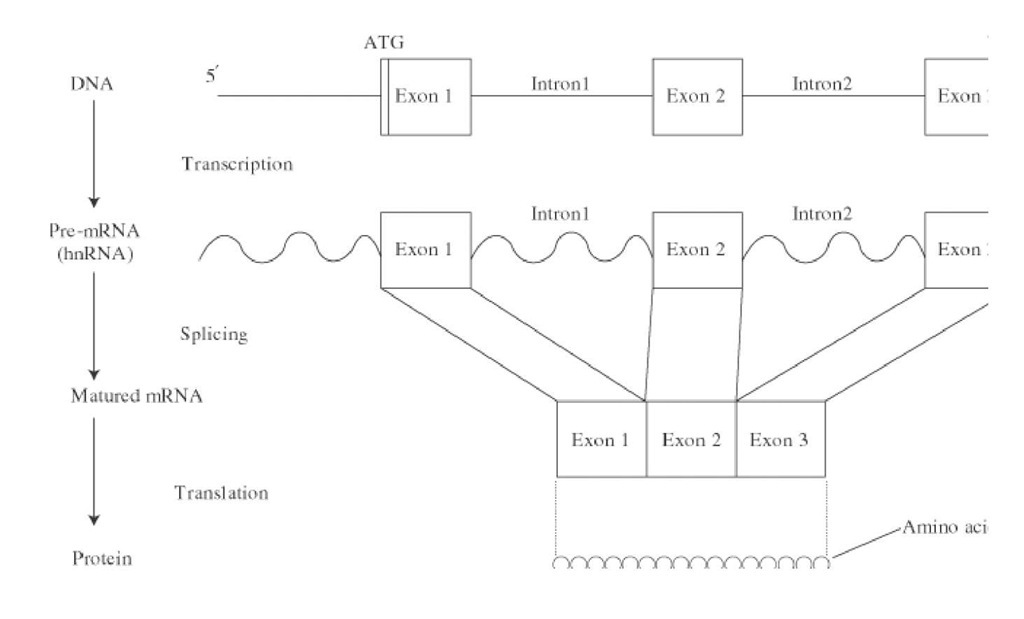Many eukaryotic genes are split into a number of exons by the existence of introns. Gilbert coined the terms "exons" and "introns" in 1978 (1). As shown in Figure 1, (see top of next page) the human a globin gene is split into three exons by two introns. To produce the appropriate messenger RNA, introns must be removed to generate a proper collection of linked exons through gene splicing; as it occurs in the mRNA, it is commonly called RNA splicing. Therefore, in the case of eukaryotic genes, the essential information flow will be as follows; from DNA to mRNA precursor by transcription, from precursor mRNA to mature mRNA by RNA splicing, and from mature mRNA to protein by translation
Figure 1. Gene splicing steps in the production of mature eukaryotic mRNA as illustrated for the human a-hemoglobin g Gene Splicing).
As for the evolutionary significance of the exonintron structures of genes, the "exon shuffling" theory was proposed by Gilbert (1). He claimed that a variety of genes on the genome have been created by the shuffling and exchange of exons among different genes (1) (see Exon Shuffling). As introns do not possess any apparent function, it is considered that they are used as locations for genetic recombination. Thus, frequent shuffling of exons may have been major forces of gene evolution in eukaryotic organisms. There has, however, been some opposition to the "exon shuffling" theory. For example, the "domain shuffling" theory contends that the unit of shuffling is not an exon but a functional domain of a protein that may not correspond exactly to an exon (2). In fact, it is known that the Kringle domain, which is a characteristic supersecondary structure in some serine proteinases, was shuffled many times, and always as a unit, even though the Kringle domain consists of three exons (3).
With only a few exceptions, on the other hand, it is well known that prokaryotic genomes do not contain introns. If an intron is considered to have existed before the divergence between eukaryotes and prokaryotes, the splicing mechanism should also have existed for a long time since the early stages of evolution. This is the "early-intron" theory. On the contrary, the "late-intron" theory claims that introns have been inserted as transposon-like elements into various genes after the divergence of eukaryotes and prokaryotes. The evolutionary significance of gene splicing depends on which theory is correct.

